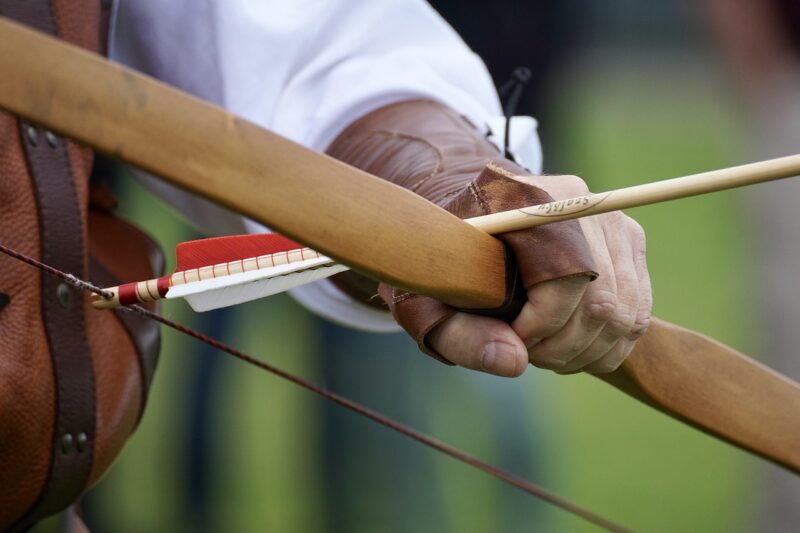From Crossbows to Compound Bows: The Evolution of Archery Technology
November 11, 2024

Archery is one of the oldest human technologies, closely associated with the evolution of hunting, warfare, and sport. From the straightforward design of the traditional longbow to the complex mechanisms of modern compound bows, the journey of archery technology showcases human ingenuity and adaptability. This article examines the significant milestones in archery technology, highlighting the innovations that have transformed this ancient practice into a beloved modern sport.
1. The Birth of Archery
Archaeological evidence suggests that the earliest bows date back to around 3000 BCE, with findings from various regions including Egypt, Scandinavia, and Mesopotamia. These early bows were simple wooden structures, often made from a single piece of wood, strung with animal sinew.
What set archery apart in ancient civilizations was its dual-purpose utility: hunting for food and providing a means of defense during conflicts. Bows allowed early humans to hit targets from a distance, improving hunting efficacy and enhancing survival rates.
As technology progressed, different cultures began to adapt archery for their unique circumstances. For example, the Egyptians were known for their longbows, while the Mongols favored shorter composite bows made from multiple materials such as wood, bone, and sinew, which provided greater power and maneuverability.
2. The Evolution of the Longbow
The longbow emerged as a dominant weapon in warfare during the medieval period, particularly in England. Standing up to six feet tall, the longbow was made from a single piece of wood and required considerable strength to draw. Its impressive range and piercing power made it a preferred weapon during conflicts like the Hundred Years’ War.
What made the longbow exceptional was the technique of archery known as “profiling,” where archers trained extensively to master the art of shooting accurately under various conditions. The famous English longbowmen played pivotal roles in victories at battles such as Crécy and Agincourt, demonstrating the effectiveness of this weapon in a military context.
However, the complexities of warfare and the advent of new military technologies eventually led to the decline of the longbow’s dominance. The introduction of firearms in the 16th century brought a significant shift in military tactics, diminishing the reliance on traditional archery.
3. The Rise of the Crossbow
Emerging alongside the longbow was the crossbow, a notable advancement due to its mechanical design. Dating back to around 400 BCE in ancient China, crossbows featured a horizontal bow mounted on a stock and employed a trigger mechanism to release bolts.
The crossbow’s primary advantage lay in its ease of use. It required significantly less physical strength to operate than a longbow and could be fired with more accuracy and consistency. This made it achievable for even those who had little training to effectively wield it in battle.
Crossbows became instrumental during the medieval period, especially in sieges and fortification warfare. Their ability to penetrate armor made them a formidable foe on the battlefield. However, the crossbow’s slow rate of fire compared to traditional bows led to its eventual decline with the improvement of firearm technology.
4. The Introduction of the Compound Bow
In the second half of the 20th century, a monumental shift occurred in archery technology with the invention of the compound bow. Invented in the 1960s by Holless Wilbur Allen, this bow utilized a system of pulleys and cams, allowing for increased efficiency and ease of use.
Compound bows revolutionized the archery landscape. They provided higher arrow speeds and improved accuracy, enabling archers to make precise shots even at greater distances. The let-off feature – where the draw weight decreases after a certain point in the draw cycle – allowed archers to hold the bow at full draw longer without fatigue.
Today, compound bows are the popular choice for both competitive archers and bowhunters alike, thanks to their versatility and the ability to fine-tune various attributes. Improved materials, such as carbon fiber and aluminum, have further enhanced their performance and durability.
5. Modern Innovations and Future of Archery
As technology continues to advance, modern archery has embraced innovations such as digital archery sights, stabilization systems, and advanced materials, all designed to improve performance and user experience. The use of computerized tools for training, along with apps that track performance metrics, have emerged as valuable resources for archers.
Additionally, modern bow designs can cater to a diverse range of preferences and purposes — from target archery and hunting to recreational shooting. The accessibility of archery has expanded significantly, with many communities and schools offering programs to introduce new enthusiasts to the sport.
In recent years, as awareness of mental health benefits grows, the focus on archery as a therapeutic activity has started to take hold. Many participants find solace and stress relief in the rhythmic draw, aim, and release associated with archery, making it a popular activity for mindfulness and wellness.
Conclusion
The evolution of archery technology is a testament to human creativity and our quest to enhance our capabilities. From the sturdy longbows of medieval warriors to the sleek designs of today’s compound bows, archery has transcended its utilitarian origins to become a cherished pastime and competitive sport. As we look towards the future, one can only imagine what new innovations will shape the next generation of archers. Whether through a return to tradition or the embrace of modern technology, the art of archery remains a perfect blend of skill, history, and innovation.








